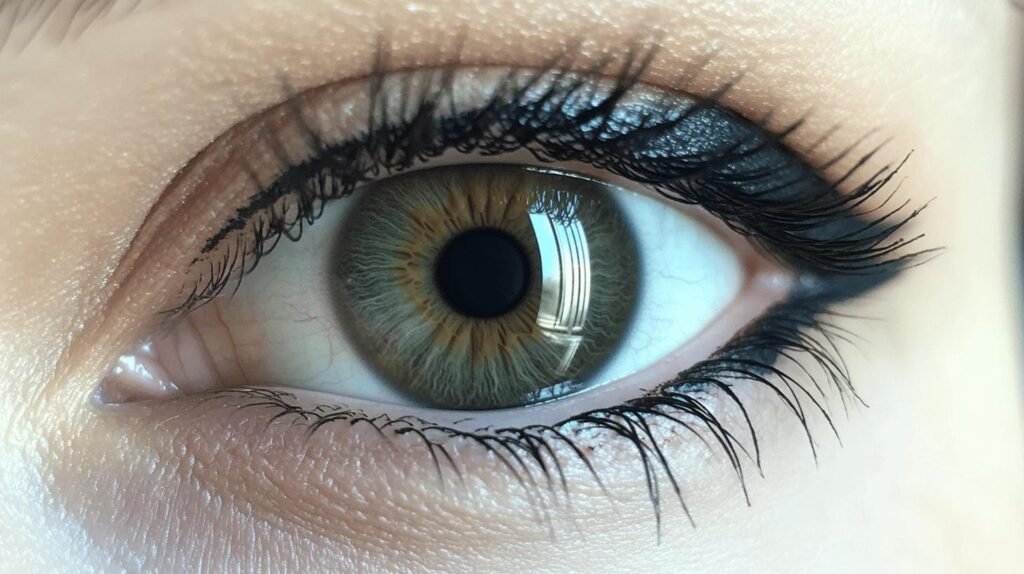TL;DR:
- Neurological eye disorders disrupt communication between the brain and eyes, leading to vision problems.
- Common symptoms include vision loss, double vision, blurred vision, and eye pain.
- Optic neuritis causes optic nerve inflammation, resulting in blurry vision and eye pain; it is treated with corticosteroids.
- Causes include MS, infections, and medications; risks include being female and living in colder climates.
- Neuroophthalmologists specialize in diagnosing and treating disorders affecting eye-brain interactions using visual tests and MRI scans.
- Treatments include medications, vision rehabilitation, and emerging biologics.
- Advances in imaging improve the diagnosis and treatment of neurological eye disorders.
Ever wondered what happens when your brain can’t correctly interpret what your eyes see? Neurological disorders of the eye might just be the culprit! These disorders can mess with your vision big time, causing anything from pesky double vision to full-blown vision loss. What’s fascinating? Your visual system is like a well-choreographed dance between your eyes, optic nerves, and brain. When something goes haywire, it can throw everything off balance. Whether it’s due to nerve damage or inflammation, these conditions impact your daily life more than you’d expect. Let’s dive into the details and shed some light on these complex connections!
Understanding Neurological Disorders of the Eye
The brain and eyes communicate through a fast-track system that processes information. When neurological disorders occur, they disrupt this interaction, causing visual issues. The eyes gather data for the brain, and disruptions can feel like a TV signal gone awry. Neurological eye disorders can impact optic nerves, leading to trouble understanding what you see. It’s like having perfect vision but a brain that struggles to interpret it.
Common Symptoms
You’ll often notice the following symptoms:
- Vision loss
- Double vision
- Abnormal eye movements
- Blurred vision
- Eye pain
These symptoms can suddenly interfere with daily tasks. Imagine reading or driving only for your vision to blur or double—it’s both frustrating and dangerous. These issues can make simple tasks feel tough, so addressing them with a specialist is essential. A specialist can diagnose the problem and help restore your vision.
Optic Neuritis: Causes, Symptoms, and Treatments

Optic neuritis occurs when the optic nerve, which sends visual messages from the eyes to the brain, becomes inflamed. This inflammation can blur or darken vision, like looking through a foggy window. It’s often painful and can temporarily cause vision loss, so seek medical help quickly.
Symptoms
Look for these common indicators:
- Blurry or dim vision
- Eye pain, especially during eye movement
- Loss of colour vision
- Seeing flashes of light
Causes and Risk Factors
Optic neuritis can result from an overactive immune system attacking the optic nerve. Conditions like multiple sclerosis (MS) are frequent causes. Risks include being female, having a family history of MS, or living in colder climates. Infections or certain medications can also trigger the disorder.
Treatment
Corticosteroids are typically used to reduce inflammation and speed recovery. If steroids aren’t effective, plasma exchange therapy might be suggested. Regular eye exams are crucial to monitor changes and prevent further issues, turning the optic nerve into a cool, calm, and collected state.
Knowing treatments can offer relief when facing optic neuritis. Early intervention is key to a clear vision.
Optic Nerve Disorders: From Atrophy to Swelling
Optic nerve atrophy involves damage leading to vision loss. It’s like a frayed wire not properly transmitting electricity. Symptoms include central vision loss, colour vision changes, and diminished brightness perception. Causes range from glaucoma (like a pressure cooker for the eyes) to ischemia or hereditary factors—traits nobody wants.
Optic nerve swelling, often from conditions like papilledema, causes similar issues. Increased brain pressure inflates the optic nerve, similar to seeing through milk. Symptoms include headaches, nausea, and blurred or double vision. Often, these stem from brain tumours or severe hypertension—signs of the body’s alarm system overreacting.
| Disorder | Symptoms | Treatments |
|---|---|---|
| Optic Nerve Atrophy | Vision loss, colour changes | Manage underlying condition |
| Optic Nerve Swelling | Headaches, blurred vision | Reduce brain pressure |
The Role of Neuro-Ophthalmologists in Diagnosing Eye Disorders

Neuroophthalmologists act as eye and brain detectives, specializing in how they interact. They diagnose and treat conditions affecting eye-brain communication, assess cranial nerve function, and check ocular motility. If you have focusing or movement issues, these specialists are your go-to.
Diagnostic Tools
They utilize various tools to uncover eye-related problems. Visual field tests gauge peripheral vision, while optical coherence tomography (OCT) provides a high-definition retina view. MRI scans examine the brain and optic nerves, offering a comprehensive visual check-up.
Importance
Their role is vital for managing complex eye disorders. They solve symptoms like vision loss, double vision, or abnormal movements, thus enhancing life quality. This expertise makes them crucial for addressing neuro-ophthalmic challenges.
Advances in Treating Neurological Eye Disorders
Traditional treatments have been foundational for tackling neurological eye disorders. Medications like corticosteroids manage inflammation—a common element of these disorders. They act like quick responders, calming the inflamed optic nerve. Therapies, including vision rehabilitation, aid patients in adapting to vision changes akin to a visual workout.
Emerging Research and Innovations
Research is brewing innovative treatments. Biologics, medicines from living organisms, target specific immune system parts, offering tailored treatment options. They work like a special squad addressing root problems.
Advanced neuroimaging techniques are also progressing, providing detailed brain and optic nerve images. Like having a high-definition camera inside, these tools enhance diagnosis and treatment monitoring precision. They guide doctors, transitioning from guesswork to strategic planning, ultimately improving patient care.
Final Words
Navigating the complex world of neurological disorders of the eye, we’ve uncovered the vital link between the brain and our vision. Understanding symptoms and treatment options is crucial for managing these conditions, from optic neuritis to optic nerve disorders. Neuroophthalmologists are key players in diagnosing and treating these disorders, using their unique expertise and tools.
With advancements in treatments and emerging research leading the way, there’s hope for improved management of these eye conditions. Embracing these developments offers promising outcomes, making the future of eye health brighter. Keep learning, and you’ll be better equipped to tackle these challenges head-on!
FAQ
What neurological disorder affects the eyes?
Neurological disorders like multiple sclerosis, optic neuritis, and brain tumours can disrupt the brain-eye connection, impacting vision.
Can neurological eye problems be fixed?
Depending on the condition, neurological eye problems can be managed with treatments like medications, therapy, or surgery. Your doctor’s diagnosis guides the best approach.
What are the symptoms of a neurological problem?
Symptoms include unexplained vision changes, eye pain, double vision, and abnormal movements. These vary by disorder but always need medical attention.
What are visual neurological symptoms?
Visual symptoms are vision loss, blurriness, double vision, floaters, or sudden changes. These signal potential neurological issues affecting vision.
What neurological disorders cause blurred vision?
Conditions like optic neuritis, stroke, or multiple sclerosis can cause blurred vision due to damage in the visual pathway.
Neurological disorders that cause eye floaters?
Vitreous detachment in the eye isn’t solely neurological, but brain conditions like migraines might cause perceived floaters.
Are there treatments for neurological eye disorders?
Treatments often involve medications (like corticosteroids for inflammation), vision therapy, or neuroimaging monitoring. They are tailored to the specific disorder.
How are neurological eye disorders tested?
Eye exams, neuroimaging (like MRI), and visual field tests are tools to diagnose neurological eye disorders.
Do neurological disorders impact babies’ eyes?
Disorders like hydrocephalus or congenital optic nerve issues might impact eye development and vision in babies, requiring specialist care.

